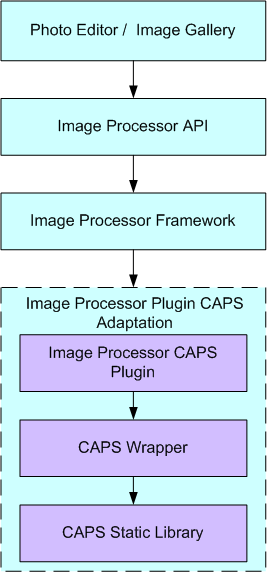Image Processor Overview
This document introduces to the Image Processor library.
Purpose
Image Processor is specially developed for imaging on mobile devices. The main objective is to create powerful applications:
Image Processor library details
The DLL that provides the functionality and the library to which your code must link is identified below.
Architectural relationship
Image Processor is designed with hardware constraints often associated with mobile devices in mind. The Image Processor framework minimizes both memory consumption and the CPU power required.
The architectural relationship diagram for the Image Processor is shown below:

Image Processor
Image Processor is a high-level library and framework. Image Processor encapsulates all the internal processing and basic functionality required to create applications. Basic functions include
The image processor also allows some geometrical operations to the image:
Optionally, the image processor supports
Image Processor Adaptation Plug-in
The image processor plug-in is an attachable component which implement the features of Image Processor library.
Note: The plug-ins are dependant on the Image Processor library, and will not function as stand-alone components.
Key Image Processor Class
The principal classes are
ImageProcessor::CImgProcessor, which provides a convenient interface to process images.ImageProcessor::TEffect, which is the parent class of all effects, for example,ImageProcessor::TEffectAntique.
Using Image Processor
Image Processor is used for the following: